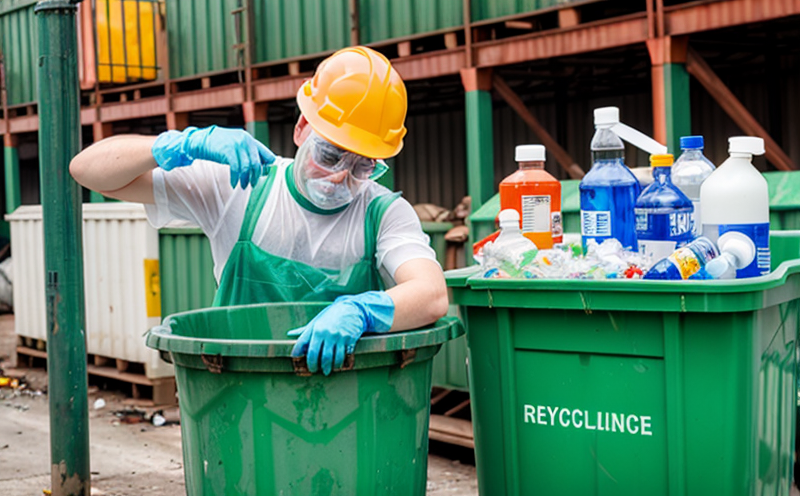AOAC 99022 Sulfite Residue Testing in Waste Food Samples
AOAC International Standard Method 990.22 is a widely recognized procedure for quantifying sulfite residues in waste food samples. This method is crucial for ensuring compliance with regulatory standards and providing reliable data for quality management, compliance officers, R&D engineers, and procurement teams involved in the recycling or disposal of food products.
The test aims to identify levels of sulfur dioxide (SO₂) and its derivatives that may be present as preservatives, antioxidants, or unintentional contaminants in waste materials. Sulfites are known for their ability to act as antimicrobial agents and can persist even after the intended use has concluded, potentially leading to environmental contamination if not properly managed.
The AOAC 99022 method uses a gas chromatographic system equipped with a sulfur chemiluminescence detector (SCLD) for accurate quantification. This approach ensures precision and reliability in detecting even trace amounts of sulfite residues, which is critical given the stringent regulatory requirements imposed by organizations like the Food and Drug Administration (FDA) and the European Union.
The testing process involves several key steps: sample preparation, derivatization if necessary, injection into a gas chromatograph, and subsequent detection using SCLD. The method's accuracy is enhanced by its ability to differentiate between various sulfur species present in complex matrices such as waste food samples.
Understanding the implications of sulfite residues on both human health and environmental sustainability underscores the importance of this testing protocol. Regulatory bodies globally have set limits for acceptable levels of sulfites, with the FDA’s Total Diet Study (TDS) providing a comprehensive overview of dietary exposure to these compounds in the United States.
Compliance with such standards not only ensures product safety but also supports broader sustainability goals by minimizing environmental impact. By accurately measuring and controlling sulfite residues, businesses can contribute significantly to reducing potential risks associated with contaminated waste streams.
Applied Standards
| Standard Name | Description |
|---|---|
| AOAC 990.22 | Method for the Determination of Sulfite Residues in Food and Feed by Gas Chromatography with Chemiluminescence Detection. |
Scope and Methodology
The AOAC 990.22 method is applicable to various types of waste food samples, including but not limited to spoiled fruits, vegetables, dairy products, and meats. The primary scope includes:
- Evaluating the effectiveness of recycling or composting programs.
- Identifying potential sources of contamination in waste streams.
- Ensuring compliance with international food safety regulations.
The methodology involves collecting representative samples from designated areas within facilities handling waste food products. Samples are then prepared according to the protocol, which may include rinsing, drying, and grinding if necessary. Once prepared, these samples are injected into a gas chromatograph equipped with an SCLD detector.
Derivatization steps ensure optimal detection of sulfur species by converting them into more readily detectable forms. This process is essential for achieving the required sensitivity levels specified in the method. After analysis, results are reported as weight percent or ppm (parts per million) sulfite content. Compliance with established limits ensures that waste materials do not pose risks to environmental health.
Environmental and Sustainability Contributions
- The accurate identification of sulfite residues helps minimize their release into the environment, preventing potential harm to ecosystems.
- By ensuring that waste products are free from harmful contaminants like sulfites, businesses can contribute positively to sustainability efforts.
- Avoiding unnecessary disposal costs associated with non-compliant materials.
- Promoting the use of sustainable practices in food waste management through informed decision-making based on test results.





